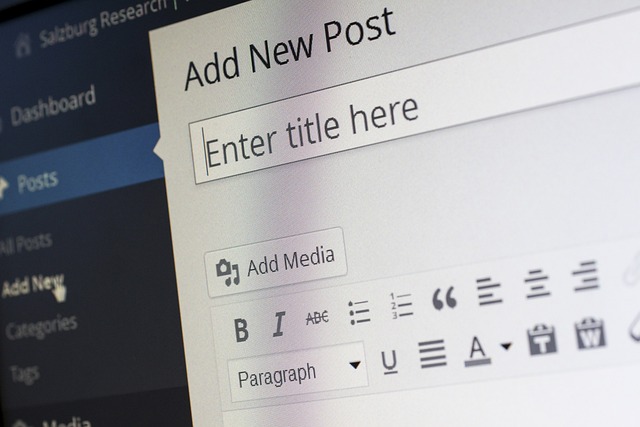Did you know that transactional emails have an open rate of around 50%? That’s right, half of the recipients actually open and read these types of emails. Now, imagine the potential impact these emails can have on your cross-selling and upselling efforts.
Transactional emails, such as order confirmations or shipping notifications, are often overlooked as mere customer service notifications. But they can be so much more. These emails provide a unique opportunity to engage with your customers at a time when they are already actively involved with your brand.
By strategically incorporating cross-selling and upselling techniques into these emails, you can boost your revenue and customer loyalty. Cross-selling allows you to recommend complementary products or services that enhance the customer’s initial purchase, while upselling encourages customers to upgrade to a premium version or add-on to their existing purchase.
In this article, we will explore the significance of transactional emails in cross-selling and upselling, and provide you with valuable insights on designing effective emails, personalization techniques, and measuring success. Get ready to take your transactional emails to the next level and unlock their true potential.
Key Takeaways
- Transactional emails provide an opportunity to engage with customers and should be designed using best practices for email design.
- Cross-selling and upselling can boost revenue and customer loyalty by recommending complementary products and encouraging upgrades.
- Utilizing customer data allows for tailoring cross-selling offers, which increases revenue and customer satisfaction.
- Personalization and segmentation are key for designing effective transactional emails and can increase conversion rates and customer satisfaction.
Understanding Transactional Emails
Get ready to dive into the world of transactional emails and discover their awesome power in boosting your cross-selling and upselling efforts!
Understanding email marketing is essential for any business that wants to effectively engage with their customers. Transactional emails are a type of email that’s triggered by a specific action, such as a purchase or a password reset. They’re highly personalized and provide important information to the recipient.
When it comes to transactional emails, best practices for email design are crucial. You want to ensure that your emails are visually appealing, easy to read, and mobile-friendly. By following these best practices, you can increase the chances of your customers taking the desired action and ultimately drive more sales.
Now, let’s explore the power of cross-selling and how it can further enhance your business.
The Power of Cross-Selling
Are you looking to boost your sales and increase customer engagement?
Utilizing transactional emails for cross-selling is a powerful strategy that can help you achieve those goals. By including personalized product recommendations or special offers in your transactional emails, you can effectively upsell and cross-sell to your customers, maximizing the value of each interaction.
The benefits of cross-selling in transactional emails are numerous, including increased revenue, improved customer satisfaction, and enhanced brand loyalty.
Don’t miss out on the opportunity to leverage transactional emails for cross-selling and reap the rewards it can bring to your business.
Utilizing Transactional Emails for Cross-Selling
Utilizing transactional emails for cross-selling is like adding a pinch of caviar to a humble tuna sandwich – it elevates the experience and leaves customers craving for more.
When it comes to maximizing revenue through transactional emails, cross-selling is a powerful technique that should not be overlooked. By leveraging customer data, you can tailor your cross-selling offers to each individual, increasing the chances of a successful sale.
Transactional emails, such as order confirmations or shipping notifications, have high open rates and are an ideal opportunity to showcase additional products or services that complement the customer’s purchase. By strategically placing relevant cross-selling suggestions within these emails, you can capture their attention and drive additional sales.
The benefits of cross-selling in transactional emails are numerous, and we will explore them in the subsequent section.
Benefits of Cross-Selling in Transactional Emails
Enhance the customer experience by incorporating personalized product suggestions within your transactional emails, ultimately driving additional sales. By providing personalized recommendations based on your customers’ purchase history and preferences, you can increase customer engagement and encourage them to make additional purchases.
Research has shown that customers are more likely to respond positively to personalized recommendations as they feel understood and valued. This can lead to higher customer satisfaction and loyalty, as well as increased revenue for your business.
To effectively implement personalized recommendations in your transactional emails, consider using customer segmentation and data analysis to identify relevant products for each individual. Additionally, make sure to highlight the benefits and unique features of the recommended products to further entice customers.
Incorporating personalized product suggestions in your transactional emails can greatly benefit your cross-selling efforts. Moving forward, let’s explore the benefits of upselling and how it can contribute to your business growth.
The Benefits of Upselling
Boost your sales and increase revenue by taking advantage of the benefits of upselling through transactional emails. Upselling is a powerful strategy that allows you to offer customers additional products or services that complement their original purchase. By suggesting relevant upgrades or add-ons, you can not only increase the average order value but also enhance the overall customer experience.
Upselling in transactional emails enables you to reach customers at a time when they are already engaged with your brand, making it more likely for them to consider and act on your offer. By highlighting the value and benefits of the upsell, you can entice customers to make an additional purchase, leading to increased sales and customer satisfaction.
To maximize the impact of upselling, it is crucial to design effective transactional emails that captivate and convert your audience. Transitioning into the subsequent section about designing effective transactional emails, let’s explore how you can create compelling emails that drive results.
Designing Effective Transactional Emails
When it comes to designing effective transactional emails, there are three key points to keep in mind.
First, crafting compelling subject lines is crucial in grabbing your recipient’s attention and encouraging them to open the email.
Second, creating engaging content is essential to keep your readers interested and to provide them with valuable information.
Lastly, including clear and persuasive calls to action will prompt your recipients to take the desired action, whether it’s making a purchase or signing up for a newsletter.
By focusing on these key points, you can ensure that your transactional emails are effective in achieving your goals.
Crafting Compelling Subject Lines
Catch your customer’s attention with subject lines that are as enticing as a freshly baked chocolate chip cookie. To optimize open rates and increase the chances of cross-selling and upselling, it’s important to create catchy subject lines for your transactional emails.
Here are four tips to help you craft compelling subject lines:
-
Personalization: Use the recipient’s name or include relevant details to make the email feel tailored to their needs.
-
Urgency: Create a sense of FOMO (fear of missing out) by including limited-time offers or exclusive deals.
-
Clarity: Clearly communicate the value or benefit that the customer will receive by opening the email.
-
Curiosity: Pique the recipient’s interest by using intriguing or thought-provoking subject lines that make them curious to learn more.
By implementing these strategies, you can increase the chances of your customers opening your emails and engaging with your content.
Now, let’s move on to creating engaging content and calls to action.
Creating Engaging Content and Calls to Action
To truly captivate your audience, make sure your content is engaging and your calls to action are irresistible.
Creating interactive experiences within your transactional emails can greatly enhance customer engagement. Consider including dynamic elements such as personalized recommendations, interactive quizzes, or even gamified features that encourage users to explore and interact with your brand.
By optimizing email deliverability and ensuring your emails reach the intended recipients’ inboxes, you increase the chances of them engaging with your content and taking the desired actions.
Additionally, well-crafted calls to action that clearly communicate the benefits and urgency of the offer can further entice customers to make a purchase or take the next step in their buyer’s journey.
As we move into the next section about personalization and segmentation, remember that tailoring your content to specific customer segments can greatly increase conversion rates and customer satisfaction.
Personalization and Segmentation
When it comes to designing effective transactional emails, personalization and segmentation are key.
Tailoring transactional emails to individual customers allows you to create a personalized experience that resonates with each recipient.
By implementing segmentation strategies, you can effectively target specific groups of customers for upselling and cross-selling, increasing the chances of driving additional sales.
Take advantage of these strategies to make the most out of your transactional emails and maximize your revenue potential.
Tailoring Transactional Emails to Individual Customers
Personalize your transactional emails to each customer, tailoring the content and recommendations specifically to their preferences and past purchasing behavior. By implementing email customization techniques and personalized marketing strategies, you can create a more engaging and effective experience for your customers. One way to achieve this is by using dynamic content that adapts to each individual’s preferences. For example, you can include product recommendations based on their previous purchases or browsing history. Another effective strategy is to segment your customer base and send targeted emails based on their demographics, interests, or buying habits. This level of personalization not only increases the likelihood of cross-selling and upselling opportunities but also enhances customer satisfaction and loyalty. By tailoring your transactional emails to individual customers, you can maximize the potential for increased sales and customer engagement. Moving forward, let’s explore how implementing segmentation strategies can further enhance your cross-selling and upselling efforts.
Implementing Segmentation Strategies for Effective Upselling and Cross-Selling
By implementing effective segmentation strategies, you can tailor your marketing efforts to target specific customer groups, increasing the chances of successful upselling and cross-selling.
Segmentation techniques allow you to divide your customer base into smaller, more manageable groups based on various factors such as demographics, purchase history, and engagement level. This enables you to create personalized transactional emails that resonate with each customer segment, showcasing relevant products or services that they’re more likely to be interested in.
By understanding their specific needs and preferences, you can deliver targeted recommendations and promotions, ultimately driving higher conversion rates and revenue. Targeting strategies, such as behavioral segmentation, can help you identify customers who’ve shown intent or interest in certain products, allowing you to tailor your upselling and cross-selling efforts accordingly.
By using segmentation effectively, you can optimize your transactional emails to maximize their impact and drive better results. Transitioning into the subsequent section about measuring success and improving strategies.
Measuring Success and Improving Strategies
To gauge the effectiveness of your cross-selling and upselling strategies, take a closer look at how you can measure success and improve your approach.
One important aspect of measuring effectiveness is analyzing customer behavior. By tracking customer interactions and purchase patterns, you can gain valuable insights into what works and what doesn’t. Look for metrics such as click-through rates, conversion rates, and average order value to assess the impact of your transactional emails on cross-selling and upselling.
Additionally, consider conducting customer surveys or gathering feedback to understand their preferences and needs better. Armed with this information, you can refine your strategies, tailor your offers, and improve your overall approach.
Remember, success is not static; it requires continuous monitoring and adjustment to ensure maximum effectiveness in your cross-selling and upselling efforts.
Frequently Asked Questions
How can businesses effectively measure the success of their transactional email cross-selling and upselling strategies?
To effectively measure the success of your transactional email cross-selling and upselling strategies, focus on measuring campaign performance and optimizing email content.
Track key metrics such as click-through rates, conversion rates, and revenue generated from these emails. A/B testing different email variations can help identify the most effective content and design.
Additionally, track customer behavior post-email, such as repeat purchases or increased average order value, to provide insights into the success of your strategies.
Remember, consistently analyzing and refining your approach is key to achieving optimal results.
What are some common mistakes to avoid when designing transactional emails for cross-selling and upselling purposes?
Avoiding common mistakes in transactional email design for cross-selling and upselling is crucial for optimizing conversion rates. To start, think of your transactional email as a journey towards a desired destination.
The first mistake to avoid is overwhelming your audience with excessive content. Keep it concise, relevant, and visually appealing.
Secondly, neglecting personalization can lead to disengagement. Tailor your emails to individual preferences and behaviors.
Lastly, failing to include clear and compelling call-to-action buttons can result in missed opportunities. By following these best practices, you can ensure your transactional emails effectively drive cross-selling and upselling.
Are there any legal considerations or regulations that businesses should be aware of when sending transactional emails for cross-selling and upselling?
When it comes to sending transactional emails for cross-selling and upselling, businesses must be aware of legal requirements and regulations.
It’s crucial to comply with laws such as the CAN-SPAM Act, which mandates including an opt-out option and accurate sender information.
Additionally, businesses should follow best practices like obtaining explicit consent before sending promotional emails and providing clear and concise information about the cross-selling or upselling offer.
By adhering to these legal considerations and best practices, businesses can ensure a positive customer experience while avoiding potential legal issues.
How can businesses ensure that their transactional emails are personalized and tailored to each customer’s preferences?
To ensure that your transactional emails are personalized and tailored to each customer’s preferences, you can employ various personalization techniques.
Start by collecting and analyzing customer data to understand their preferences and behaviors. Then, use this information to segment your customer base and create targeted email campaigns.
Incorporate dynamic content and product recommendations based on their previous purchases or browsing history.
Additionally, allow customers to set their email preferences to control the frequency and type of emails they receive.
By implementing these strategies, you can enhance customer engagement and increase the effectiveness of your cross-selling and upselling efforts.
What are some effective strategies for segmenting customers when sending transactional emails for cross-selling and upselling purposes?
To effectively segment customers for cross-selling and upselling through transactional emails, employ targeted and personalized techniques. According to a study, personalized emails generate 6 times higher transaction rates.
Begin by categorizing customers based on their purchase history, demographics, or preferences. Then, tailor your email content and offers accordingly, ensuring relevance and value for each segment.
Use dynamic content to dynamically populate emails with personalized product recommendations. By adopting these strategies, you can increase customer engagement and response rates in your transactional email campaigns.
Conclusion
In conclusion, transactional emails play a crucial role in boosting cross-selling and upselling efforts. By leveraging the power of personalization and segmentation, businesses can effectively engage customers and drive additional sales.
Remember to design compelling transactional emails that captivate your audience and encourage them to take action. Don’t forget to measure the success of your strategies and continuously improve them.
So why wait? Start harnessing the potential of transactional emails today and watch your revenue soar, turning customers into loyal advocates. After all, in the world of cross-selling and upselling, every email counts.









